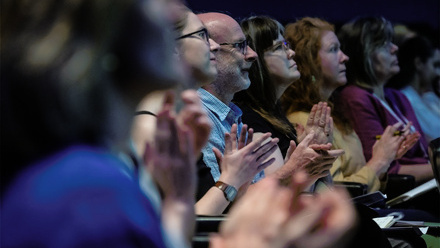Course dates: 20-24 September – 27 September - 1 October 2021
Deadline for applications: 30 July 2021. Apply here.
Successful applicants to be contacted by mid August 2021
The Ligatus Summer School 2021 will be co-organised with the Saint Catherine Foundation. Due to the ongoing uncertainty surrounding travel and even small gatherings of people, we have come to the conclusion that this year’s summer school will have to be delivered online. Participants will therefore need to have access to a computer and the Internet with the zoom video-conferencing software installed. Further information regarding software for the second week of the course (Linked Data) will follow.
Background
The contribution that bindings can make to our understanding of the history and culture of the book is often neglected, but they can offer insights into the study of readership, the book trade, and the provenance of books that are often not available elsewhere. In order to realise this potential, it is important to learn not only the history of the craft but also how to record what is seen in a consistent and organised way. Librarians, cataloguers, conservators, book historians, book collectors and all scholars who work with early books can benefit from understanding the structure and materials of the bindings they encounter and knowing how to record and describe them.
Clear descriptions of bindings are invaluable for the management of library collections, pursuing academic research and making informed decisions about conservation. They are also important for digitisation projects, as they can radically enrich the potential of image and text metadata. It is our belief that bindings should be seen as an integral part of the book, without which our understanding of the history and use of books is often greatly circumscribed.
The main purpose of the Summer School is to uncover the possibilities latent in the detailed study of bookbinding. Both courses offered in this Summer School look at bindings from different geographical areas and with a different approach.
Week 1 (20 – 24 September 2021): European Bookbinding 1450-1830
Tutor: Professor N. Pickwoad
This course will follow European bookbinding from the end of the Middle Ages to the beginning of the Industrial Revolution, using the bindings themselves to illustrate the aims and intentions of the binding trade. A large part of the course will be devoted to the identification of both broad and detailed distinctions within the larger groups of plain commercial bindings and the possibilities of identifying the work of different countries, cities, even workshops without reference to finishing tools. The identification and significance of the different materials used in bookbinding will be examined, as well as the classification of bookbindings by structural type, and how these types developed through the three centuries covered by the course. The development of binding decoration will be touched on, but will not form a major part of the discussion.
The course consists of ten 90-minute sessions with Powerpoint presentations (over 800 images will be shown). Actual examples of bindings will be examined in the afternoons from Prof. Pickwoad’s own binding collection.
Week 2 (27 September – 1 October 2021): Identifying and Recording Bookbinding Structures of the Eastern Mediterranean
Tutors: Dr Athanasios Velios and Dr Georgios Boudalis
This course is divided into two interconnected sessions. In the first section, Dr Georgios Boudalis, will focus on the major structural and decorative features of the different bookbinding traditions that have developed in the eastern Mediterranean – including the Coptic, Syriac, Armenian, Georgian and Islamic – with special focus on the Byzantine and post-Byzantine bookbindings. The aim is to follow the evolution of these closely related bookbinding types and establish their similarities and differences during lectures, slide-shows and demonstrations of real bookbindings from collections in Thessaloniki. This part of the course will consist of six 90-minute presentations from Monday to Wednesday.
The second part of the course, taught by Dr Athanasios Velios, will focus on the methodologies and techniques that can be used to record bookbindings. In particular: a) Linked Data, the semantic web and the CIDOC Conceptual Reference Model (CRM); b) standardised vocabularies for book descriptions and relevant standards (Language of Bindings and SKOS); c) the development of database schemas for book descriptions; d) mapping bookbinding description databases to CIDOC-CRM and publishing Linked Data. This session will consist of a combination of presentations and hands-on workshops in groups.
About Ligatus
Ligatus undertakes work in the history of bookbinding, book conservation, archiving and the application of digital technology to the exploration of these fields. Ligatus’s main research projects include the conservation of the books in the library of St. Catherine’s Monastery on Mount Sinai, the development of the Language of Bindings (LoB) thesaurus of bookbinding terms and the Linked Conservation Data project.
About the Saint Catherine Foundation
The Saint Catherine Foundation and its related organizations in the USA and Switzerland support conservation work at Saint Catherine’s Monastery, Sinai, Egypt. The foundations in London, New York, and Geneva collaborate with leading universities, museums, libraries and other institutions on cultural, educational and fundraising events and initiatives in Europe, the US and beyond. Partners include the Metropolitan Museum New York, British Library London, State Hermitage Museum St Petersburg, and the Bibliotheca Alexandrina Egypt. The Foundation has been collaborating with Ligatus researchers over the past 20 years.



